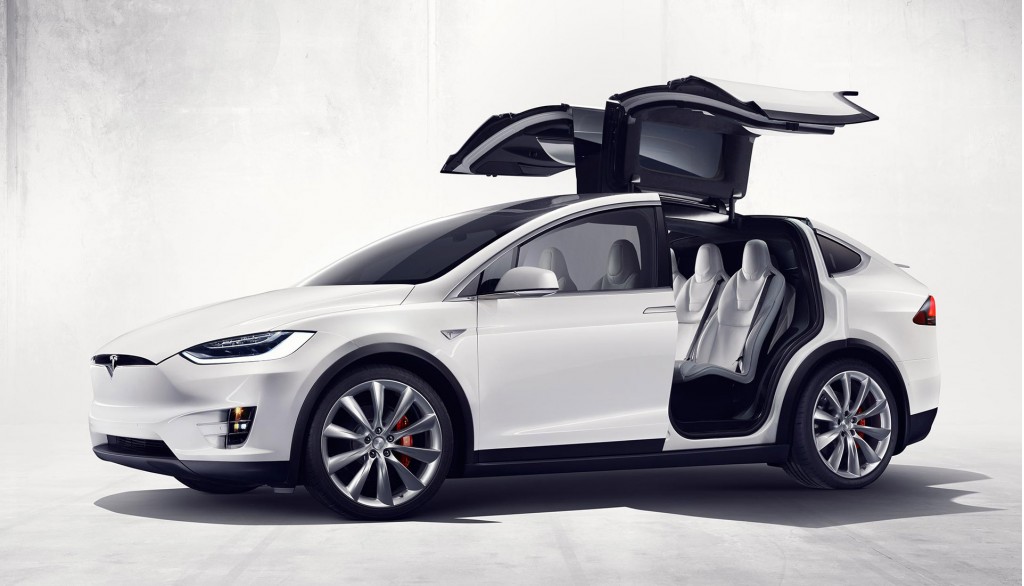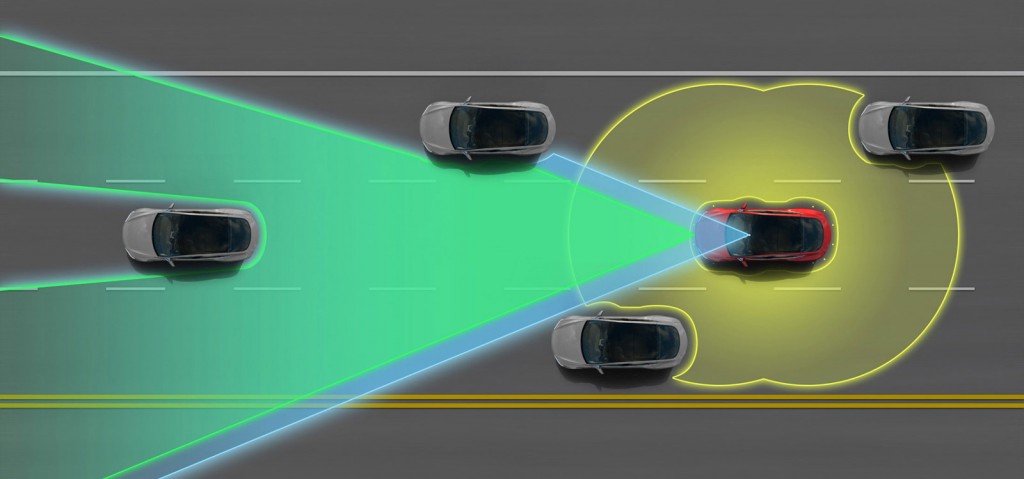Automakers rarely "de-content" their cars, much less take away some of the very features that provide sizzle and PR value.
But Tesla's new and more advanced "Hardware 2" electronic driver-assist features on latest cars appear to be a temporary step backwards.
Announced last month, Hardware 2 is a new package of sensors for the Autopilot driver-assist system, and it's being fitted to all new Tesla Model S and Model X electric cars.
DON'T MISS: Tesla upgrades self-driving sensors, hardware; full autonomy test next year?
It replaces the hardware suite built into all Tesla electric cars since late 2015, retroactively known as "Hardware 1."
When he announced Hardware 2, Tesla CEO Elon Musk said the new setup would provide the foundation for Tesla's first fully-autonomous cars.
But he also said that, initially, Hardware 2 cars will be less capable than Hardware 1 cars.

2016 Tesla Model X
He said Tesla's latest production cars won't immediately be capable of automatic emergency braking, adaptive cruise control, or active lane control.
Those features are to be activated later in over-the-air updates, which are generally expected to come every two to three months.
The reason behind this unusual maneuver likely has more to do with business partnerships than with technology.
ALSO SEE: Tesla's own numbers show Autopilot has higher crash rate than human drivers
Earlier this year, Mobileye and Tesla parted ways in the wake of the fatal crash of a Model S operating on Autopilot.
Mobileye's EyeQ3 camera and related software were a crucial part of Autopilot, and Tesla may not have been able to get the same capabilities from its replacement supplier, Nvidia, theorizes a writer on Seeking Alpha (subscription required).
The analysis argues that Tesla relied heavily on software supplied by Mobileye to enable many of Autopilot's features, and so did not have its own software available when the tech company withdrew its products.

Tesla Model S Autopilot system
This begs the question of how much work Tesla did in-house on Autopilot—and how much work would correspondingly be required to swap out one set of sensor hardware for another.
Tesla plans to use Autopilot as the basis for future self-driving cars, gradually adding capabilities until the system can achieve full autonomy.
The less-capable "Hardware 2" cars seem to be a step back from that goal, but they will most likely be viewed positively by current Autopilot users, who have continued to grow in number since that fatal Model S crash.
MORE: What a prototype self-driving Tesla 'sees' on public roads
While Tesla has temporarily dialed back the capabilities of Autopilot for its new buyers, it also taking an important step toward the goal of fully-autonomous cars.
The company recently released a pair of videos showing a prototype self-driving car on public roads.
Like most other automakers and tech companies, including Google and Uber, Tesla is now testing prototype self-driving cars as part of its substantial autonomous-car development program.
The Silicon Valley electric-car maker, however, is the only one that sells new cars containing electronic driver-assistance software that it clearly identifies as "beta," or development, versions rather than a completed product.
_______________________________________________












